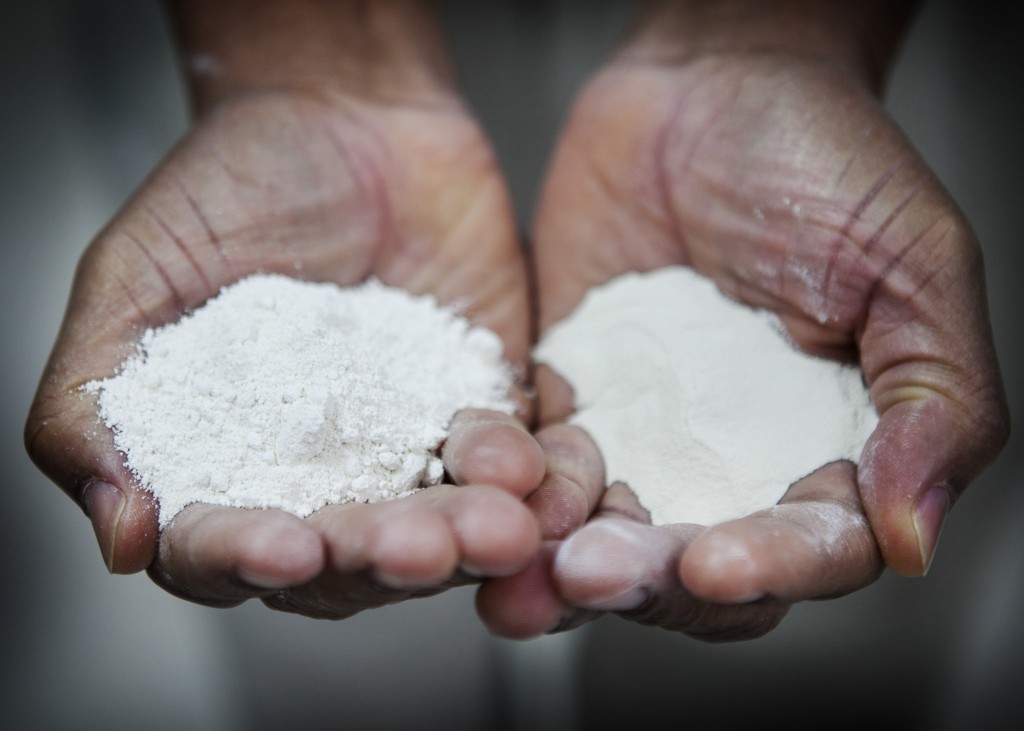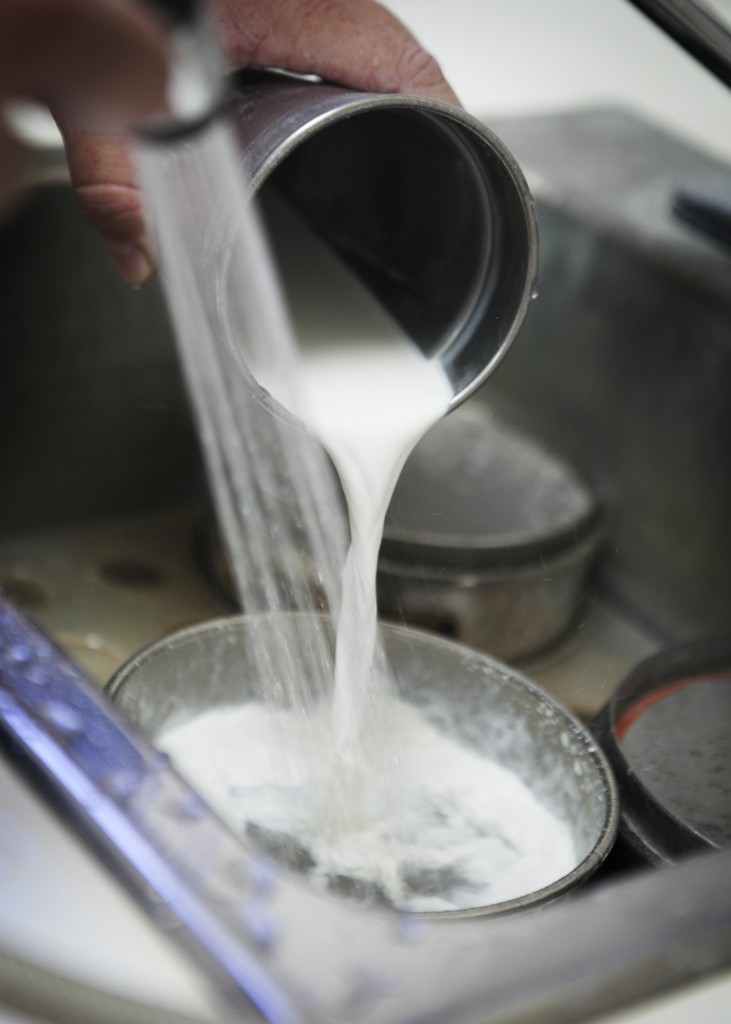Product Finder
Our Kaolin products are used in hundreds of applications. Let us help you find the exact Burgess Pigment product for your needs.
Access Product FinderDistributors
Though we’re a small company at heart, our influence reaches all the corners of the earth. Explore the distributors of Burgess Pigment products here.
Find DistributorWhat is Kaolin?
Kaolin generally refers to a naturally occurring mineral, kaolinite. Kaolinite is a platy, aluminum silicate, which is white or off-white in color.

Pulverized Kaolin (Left) versus Spray Dried Beads (Right)
Commercially offered grades of kaolin are available as water washed, calcined, or surface modified.
Water washed clays are produced by subjecting crude clays to an intensive process of blunging, slurrying, sieving, grinding, centrifuging, classifying, chemically and possibly magnetically treating, concentrating, and drying to achieve a desired level of purity, particle size, brightness, and residue. Water washed clays are hydrous clays, meaning they retain the 14% bound water of hydration found in the crude clay.
Calcined clays are produced by using water washed clay as a raw material for heat treatment, also known as calcination. The water washed feed clay is chosen for processing based on the desired finished product requirement. The water washed clays will be ground, calcined at temperatures near or above 650C, and ground again to reduce fused particles formed during the calcination step. Calcining methods can be either flash, with the clay having a residence time in the calcining zone measured in seconds, or soak (conventional), with the clay having a residence time in the calcining zone in excess of thirty minutes. Soak calciners can be either vertical or rotary design and are gravity fed, while flash calciners are typically pneumatically fed. Calcined clays are anhydrous, meaning the 14% bound water of hydration found in the crude clay has been removed by the calcining process.

325 Mesh Residue Test
Surface Modified Clays are produced by surface coating a calcined clay with a chemical. The range of treatments is quite varied and application specific. Burgess Pigment offers amino and organofunctional silane treatments reacted on the kaolin surface to later crosslink with an intended polymer system. The surface treatment increases the chemical bond strength of the clay which provides improved physical and electrical properties of the final product.
